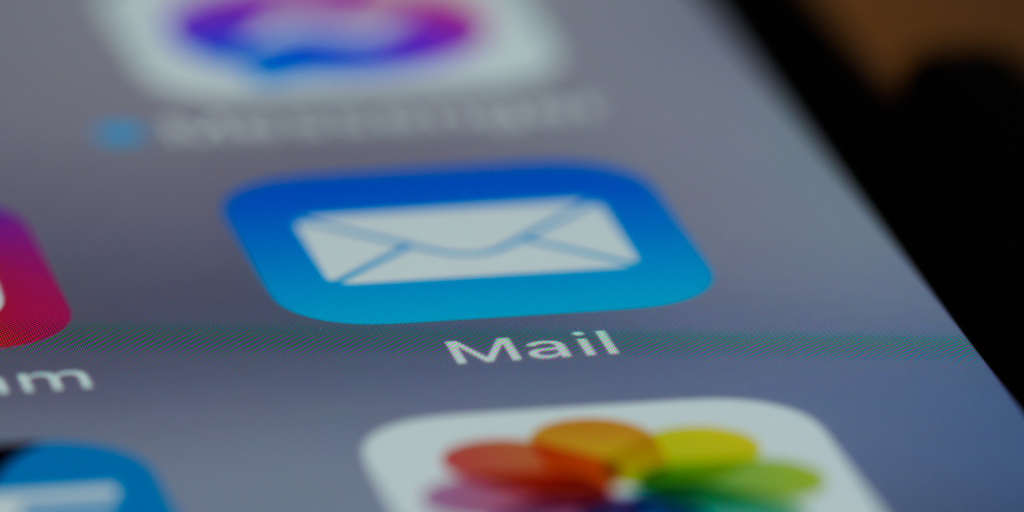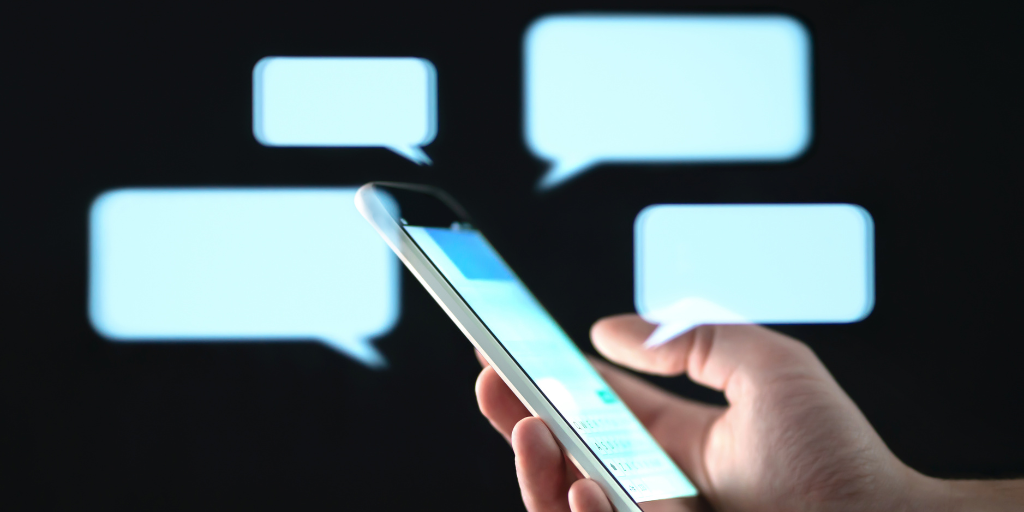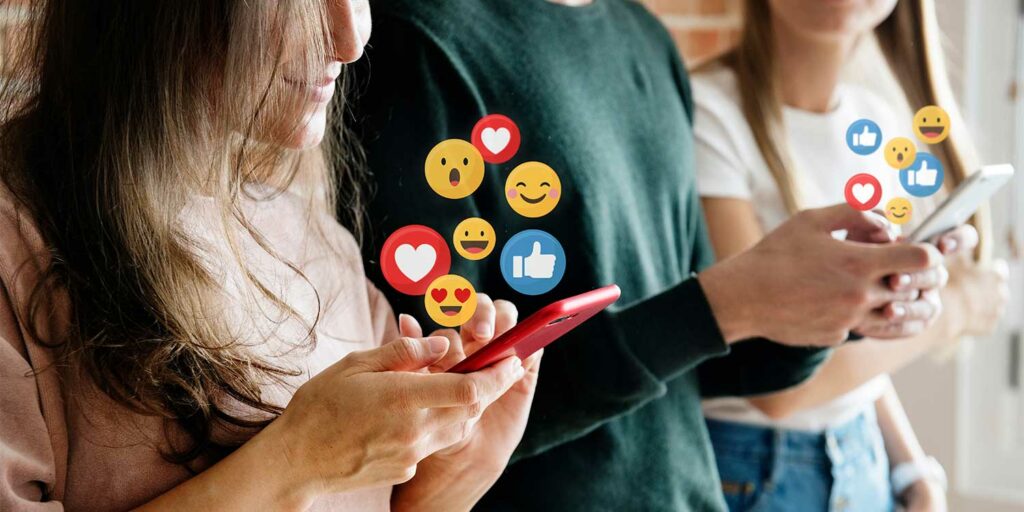In 2025, there are more channels of business communication than ever, making it harder to know which one is best for reaching customers. Two of the most prominent are email and text messaging. Both channels are widely used for marketing, customer service and internal updates—but how do they stack up against each other in effectiveness, especially from the customer’s perspective?
Text versus Email: Key Differences
Open Rates and Visibility:
One of the biggest differences between text versus email is how likely your message is to be seen. Text messages boast an open rate near 98–99%, meaning almost every interaction gets read. By contrast, the average email open rate is only around 20–30%.
People’s phone notifications and the personal nature of text make it hard to ignore. Emails, however, often get buried in crowded inboxes or diverted to spam folders.
Immediacy and Response Time:
Text is inherently more immediate. Most users hear the ding of a new message and check it right away. Studies show more than 90% of texts are opened and responded to within just three minutes, whereas the average response time for email is around 90 minutes.
Emails are often read and answered at a slower pace, which is fine for less urgent communication but a drawback for time-sensitive outreach.
Message Content and Length:
Another key difference lies in the content you can send. Email is well-suited for longer-form content: detailed updates, newsletters, documents or rich media.
Text messages, on the other hand, are best for concise communication. With text, you’re limited to short messages. A quick text is easier to digest than a long email, but it also means complex information or nuanced discussions might not fit in a single text.
For example, a retail brand might send a text message marketing campaign announcing a one-day sale with a short URL, while their monthly product catalog still goes out via email due to its length and visuals.
Deliverability and Opt-In:
Both channels require permission-based sending to comply with laws like CAN-SPAM and TCPA. Generally, email marketing faces challenges like spam filters and promotions tabs that can affect deliverability. Text messaging, by contrast, goes straight to the user’s message inbox, assuming the phone number is valid and not on Do-Not-Contact lists.
However, text requires the customer’s mobile number and explicit consent to receive texts, which is a higher bar to clear. Once customers do opt in, though, businesses have a direct line to them. It’s worth noting that consumers can easily opt out of both channels (unsubscribe links in emails or texting “STOP” to opt out of SMS), so maintaining trust by sending relevant content is crucial in each case.
Cost and ROI:
Sending emails in bulk is relatively inexpensive. Many email marketing platforms charge low rates per thousand emails, and the marginal cost of one more email is almost zero. Text message marketing cost is higher on a per-message basis; businesses might pay a few cents per text and need to use a service provider.
Despite the higher upfront cost per message, text often delivers a strong return on investment (ROI). In fact, recent data shows text marketing generates about $71 in revenue for every $1 spent, compared to $36 per $1 for email marketing.
Customer Communication Preferences and Trends
Understanding customer preferences is key to choosing the right channel. Nearly 48% of customers said they prefer to receive brand updates via text, making it the single most preferred channel, while only 22% chose email. That’s a majority in favor of text communication when it comes to things like promotions, reminders and alerts. However, this doesn’t mean email is obsolete. About 1 in 5 consumers still favor email for certain communications, and many are accustomed to getting longer-form content or official documents via email.
The preference for more immediate communication is particularly strong among younger demographics, like Millennials and Gen Z, who grew up with texting. One survey found 75% of millennials would rather lose the ability to call than to text on their phones.
Shifting Business Practices:
On the business side, we’re seeing companies respond to these shifting preferences. In the past few years, many businesses have ramped up their text outreach, especially during and after the pandemic. In 2020, about one-third of businesses (34%) started using text messaging to reach customers for the first time.
That said, email still plays an important role for certain communications. Many customers expect order confirmations, receipts, monthly newsletters and detailed product announcements via email. It’s considered a more formal channel and one that’s easy to search and reference later.
Personalization and Relevance:
Personalization boosts engagement on any channel. Use the customer’s name and tailor the message to their interests or past behavior. The more your message feels like a 1:1 communication, the better the response.
For example, sending a text like “Hi Sara, thanks for your purchase! Reply if you have any questions about setting up your new device.” feels far more engaging than a generic blast. Similarly, personalized email subject lines and segmented content see higher open and click rates.
Respectful Timing:
Timing can make or break engagement. For texts, you’ll want to catch customers when they’re likely to be free to respond, typically during daytime or early evening hours, and not too early or late. If you run a text campaign at 7 a.m. on a Sunday, don’t be surprised by opt-outs. Research suggests peak engagement windows for business texting are mid-morning (around 9 a.m.–12 p.m.) or early evening (5 p.m.–9 p.m.) on weekdays.
For emails, consider when your audience tends to check their inbox. Mid-week mornings often work, but this can vary by audience. A/B testing send times and analyzing when you get the most opens can help hone your timing. The goal is to reach people when they’re receptive, which will naturally improve engagement.
Clear and Actionable Messages:
Keep your texts short and make the desired action obvious. If you want a reply, ask a direct question. If you’re promoting a deal, include a concise call-to-action (e.g., a link to click). In email, you have more room but still front-load the important information. Use a clear subject line and an easy-to-spot button or link for the call-to-action. Don’t make customers guess what you want them to do.
Just as important as clarity is frequency. If you overwhelm customers with daily emails or texts, they’ll start tuning you out (or worse, unsubscribe). Find a healthy cadence that keeps your company in mind without overwhelming people. This might be a few emails a month and maybe one text per week unless the customer explicitly signed up for more frequent alerts.
Finding a Balanced Strategy
Rather than thinking of email versus text messaging as an either-or, many companies find the best results by using both in a complementary way. This integrated approach respects customer preferences by giving them information in the channels they prefer for each type of message.
At the end of the day, the most effective channels of business communication are the ones that your customers actually pay attention to. And increasingly, that means meeting customers on their smartphones. If you’re looking to improve your customer communication with texting, TextMyBusiness can help. We offer an easy-to-use platform for businesses to engage via text, from marketing campaigns to appointment reminders. Start reaching your audience the way they prefer—with TextMyBusiness.






